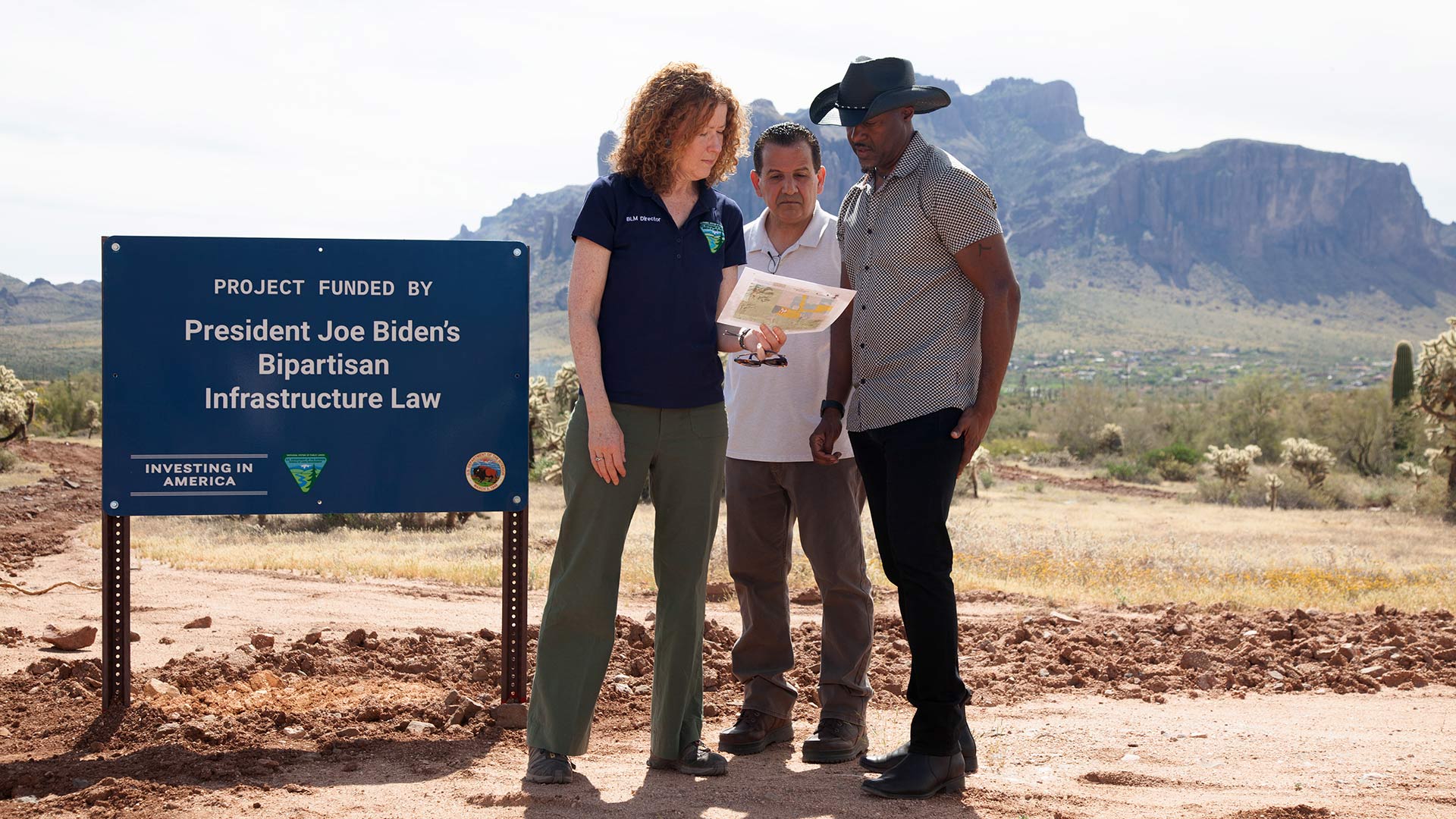 Tracy Stone-Manning, director of the Bureau of Land Management, Ray Suazo, BLM Arizona State Director and Leon Thomas, district manager of the BLM Phoenix district office at the the Goldfield Recreation Area on Wednesday, April 24, 2024.
Tracy Stone-Manning, director of the Bureau of Land Management, Ray Suazo, BLM Arizona State Director and Leon Thomas, district manager of the BLM Phoenix district office at the the Goldfield Recreation Area on Wednesday, April 24, 2024.
The new Public Lands Rule, which was announced by the Bureau of Land Management (BLM) last month, will help guide management decisions that place conservation at the forefront, safeguarding the 245 million acres of lands and waters the agency oversees.
In Arizona, the state will benefit from the policy pivot by allowing the state to offer long durable solutions for healthy lands and waters into the future, according to BLM national director, Tracy-Stone Manning.
“What we’re doing is putting conservation on par, on equal footing with all of the other multiple uses that we do,” Stone-Manning said.
The director recently stopped in Arizona to visit one of the many parcels of land that the agency is responsible for managing, the Goldfield Recreation Area, just northeast of Apache Junction.
The area of about 1,091 acres was proposed as a special recreation management area last year and was recently reclaimed from illegal dumping and camping overstay.
Leon Thomas, district manager for the Phoenix district office said approximately 110 encampments, varying from burned out and abandoned to people still living there, were cleared.
The agency had brought in social service organizations like ASU Action Nexus on Housing and Homelessness to offer unsheltered folks services, later mitigating the land and using fuel treatments to create fire breaks to improve the landscape and return it to its natural state.
Ray Suazo, BLM Arizona state director, thinks that the new rule will help restore public lands and keep wildlife corridors viable and available.
“In Arizona..it’s getting hotter and drier, the climate impacts are in front of us…making conservation a priority, helps us pay attention to the changing landscape and make it a priority when we’re talking about restoring landscapes,” Suazo said.
“We have rules around developing oil and gas, we have rules around grazing, rules around renewable energy and now we’re putting a framework or a rule around how we implement the conservation side of our mission so that we can ensure these lands and waters are healthy for future generations,” Stone-Manning said.
In Arizona, BLM oversees 12.1 million acres of surface land and 17.5 million subsurface acres.
Suazo noted that through the Bipartisan Inflation Law (BIL) and Inflation Reduction Act (IRA), the BLM has been able to do restoration work and identify conservation opportunities, due to a $15.2 million investment from President Biden’s Investing in American Agenda.
Since being signed into law, the BIL has funded over $21 million in projects in Arizona.

By submitting your comments, you hereby give AZPM the right to post your comments and potentially use them in any other form of media operated by this institution.